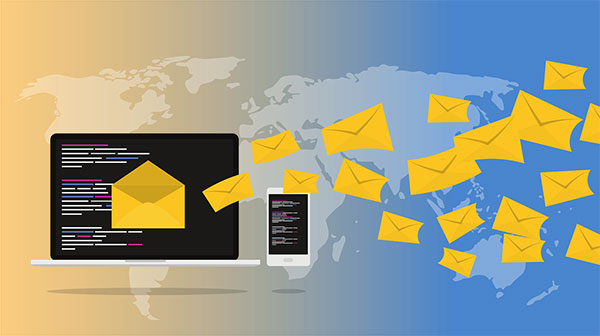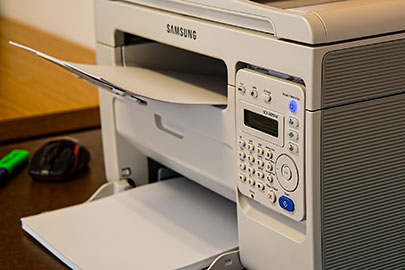What’s the Difference between Email and Gmail?
Nowadays, email messaging usage is an important part of our time on the Internet. But the technology evolves quickly, do you know the right vocabulary to use?
I’ll give you the detailed answer in this post, but let’s start with a quick explanation about the difference between email and Gmail.
The main difference between an email and Gmail, is that Gmail is an email provider, created by Google, that is used to exchange electronic mails over the Internet. Email is the technology, the format, while Gmail is an application.
After this short introduction, we can now look at these two words in detail, and compare them.
Definition
An e-mail or email is a means or system for transmitting messages electronically (as between computers on a network)
Merriam-Webster
An email is the name of an electronic document, created and sent by a person, then received and read by another.
The document is transmitted through a computer network.
Generally, this network is Internet.
History
Emails exist since the early ages of Internet.
Engineers invented it between 1965 and 1975, while working on the ARPANET project.
ARPANET was a network that became the foundation of the Internet we know today.
How it works?
To use emails now, you have to open an account with an email provider.
It could be your Internet provider, or another company, specialized in hosting emails accounts.
When you create an account with an email provider, you can directly access a web interface to read and send emails (generally it’s a webmail).
You can also use a specific client software, like Outlook or Thunderbird, to receive and send your email with this software.

To allow these clients usages, specific protocols had to be invented (POP, IMAP and SMTP), to communicate securely with the email provider.
Today, we also often use our email accounts on our smartphones.
Smartphones apps are using the same protocols as a classic computer (generally it’s IMAP).
Main providers
As I wrote previously, many people have an account with their Internet providers.
Then, we find all the big names of the Internet, allowing you to keep your email address even if you move to another Internet provider:
- Gmail (Google)
- Yahoo! Mail
- Outlook.com (Microsoft)
You can also find specialized providers, with various solutions.
For example, ProtonMail offers an encrypted email solution, for more security.
Gmail

Definition
Gmail is a product name, so not yet in our dictionary 🙂
Gmail is an email provider, offered by Google.
It allows you to manage your email from your web browser (webmail) or on any device with an Internet connection (PC, Mac, Smartphone).
History
Gmail was created in 2004.
At the beginning, you needed to be invited to use it during the test period.
Each user had a limited number of invitations he could send (50 if I remember well).
Originally, Gmail allowed us to store only 1 GB of data (emails, photos, attached files).
Since then, the storage space available has grown gradually, we can now have 15 GB disk space for free (paid options are available to get more).
How it works?
Gmail use the standard emailing protocols (POP, IMAP and SMTP), so Google didn’t innovate a lot to make this service work.
Main innovations come in the interface and additional features:
- Advanced filters allow you to sort your emails easily
- A powerful and effective search engine (Google is also the best search engine for Internet, so it must have been an easy feature to add)
- Conversations: a smart way to group emails by subject
- Automatic answering system
- Auto saving each time you press a key, you can’t lose any data
- Other Google Apps are also perfectly integrated with Gmail (Google Docs for example)
- Included anti spam and antivirus features
- etc.
And as often with Google, everything is available for free.
Google have created “Google Apps” (now “G Suite”), a powerful solution for companies.
It allows companies to have a centralized solution for email and documents.
Market
Gmail is the most used email provider in the world.
Google announced to have more than 1.5 billion users in October 2018.
Its targets are individuals (@gmail.com emails) and professionals (they can use their domain name).
The G Suite solution provides a centralized solution for companies, to manage users like on any self-hosted server (Microsoft Exchange for example), while enjoying the power of Gmail for each user.
Differences between Email and Gmail
Definition
The main difference is the one I gave in introduction: their definition.
“Email” means a communication method, it’s a generic term, not belonging to a specific company or application.
“Gmail” is a specific solution, developed by Google.
It’s like comparing “Car” and “Tesla” if you want, we must not mix the general concept and the brand or application.
Origins
As I wrote at the beginning, the email protocols are old.
They were invented before the Internet (not really useful before the Internet, but already there).
Email is a technology created 40 years before Gmail.
Gmail was released in 2004, not so far.
How it works?
An email doesn’t really work, it’s an object. It needs an email provider and a software. An email is just one of the communication methods, like phone or mail.
On the other hand, Gmail is a perfectly integrated solution, with everything to work directly. It’s an email provider and a software simultaneously.
Several applications in facts, depending on your device.
Comparison table
| Gmail | |
|---|---|
| It’s a technology | It’s a product |
| Invented in the 70s by engineers working on ARPANET. | Created by Google developers, and released in 2004. |
| It’s the basic element, one text message. | It’s a solution to manage thousands of emails on any device. |
Conclusion
And that’s it, you now know the difference between email and Gmail.
If this post was useful for you, thanks to share it on your favorite social network to help more people 🙂






